View current page
15 matchs for 1987:
1987 - Chris Burden's All the Submarines of the United States of America
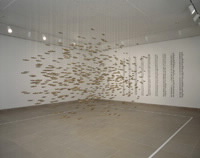
2006 - Fiona Banner's Parade

Thanks to Sally McKay for making me aware of Banner's collection of modeled fighter aircraft from all over the world, which will be shown soon in Toronto. It's the latest in our ongoing "attack of the clones" series.
Updated re: installation schedule.
Commentaries, commodities, copies,
appropriation, authorship, death-talk,
originality, ... these are for "heroes,"
hot dog boys and bubble gum chewers.
Elaine Sturtevant, 1987
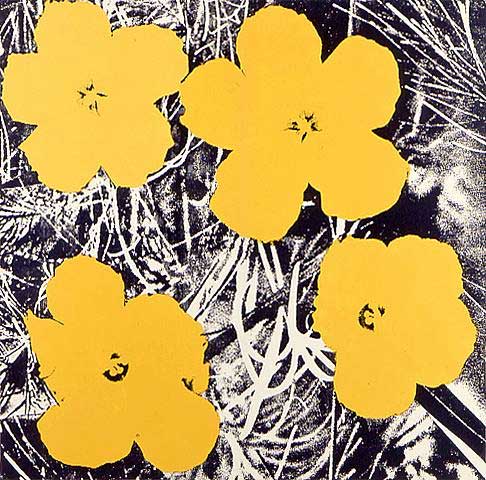
"Your Haploid Heart"
Fascinating article in Bookforum about CIA employee Alice Sheldon, who wrote science fiction under the name James Tiptree, Jr. The essay, discussing a recent bio by Julie Phillips, connects the themes of Tiptree's fiction to Sheldon's early life as the daughter of a writer/explorer traveling in Africa and Asia. I've only read one Tiptree story and didn't like it much but the story of her double life is intriguing, particularly the way political themes that could never been expressed in her "day job" got worked out in her fiction. It would be interesting to compare Tiptree's work to that of Paul Linebarger, another DC spook-type who wrote SF (as Cordwainer Smith). Sheldon was a Star Trek fan and I like this passage from the review:
"It was partly from colonial adventure stories like [Sheldon's mother's] that science fiction was born," Phillips observes. "The first time Alice saw Star Trek, she recognized it at once as a story about her childhood." This observation, like so many in this superb biography, strikes deep. It illuminates one of the darker corners of science fiction—its political unconscious, as it were. The writer's bible for Star Trek couldn't be clearer about the colonial echo: "Horatio Hornblower in space." The multicultural crew may look like it's been sent by the United Nations, but its gunship could wipe out a planet.But what about the Prime Directive? One thing I didn't know about Sheldon's life was how it ended. She feared aging and caring for a husband twelve years her senior, so they had a "suicide pact" in 1987 that the review suggests might have been a murder/suicide (Sheldon shot him and then herself). But her fiction seems every bit as renegade and "difficult" as that juicy story--I'm now eager to read more of it.
The early story "Your Haploid Heart" combines the love-death theme with another one of Tiptree's obsessions: the willingness of rational beings to exterminate "inferior" races in the name of progress. Representatives of the Galactic Federation have come to see if aliens they contacted generations ago qualify for admission to the Federation. Only "human" races do. It's the same question that preoccupied nineteenth-century colonialists: Are the natives human? The Federation's definition of human is sexual; if a race can interbreed with humans, it is human. The Esthaans are so eager to be accepted that ever since first contact with the Federation they've hidden a dirty secret—the inferior Flenni race that dwells on their planet. In truth, the Esthaans reproduce like mosses: They bud asexually to produce sexually active offspring, the Flenni, who are in turn the parents of the Esthaans (and who are, in fact, sexually compatible with humans). This biological fact is so inconvenient and repulsive to Esthaan ambitions that it has been repressed, and the Esthaans are on the verge of exterminating the Flenni, even though the consequences would be suicidal. Once again, the armature of this story is standard-issue SF—a single scientific fact, in this case the diploid-haploid reproductive cycle, is extrapolated, and its consequences drive the plot. But the depiction of psychosexual madness is an exceptional departure from the genre's norms. And a further barb: This lunacy was brought by the Federation with its offer, Be like us.Below, detail of a portrait of Alice Sheldon by Patti Perret, from The Faces of Science Fiction, 1984:

John Carpenter's Prince of Darkness was on the Sci Fi channel in the wee hours last night. Carpenter is one my favorite movie directors but not without flaws. Found this commentary on IMDb and present it intact:
You gotta love liquid Satan!, 11 June 2005
Author: greg Humphrey (greg(at)gbhumphrey(dot)com) from United States
OK what's more scary, liquid Satan or 1987 fashion? Jameson Parker's mustache is impossible to tear your eyes away from- YES!! And the form fitting Izod! Oh my god! John Carpenter's production values have a definite sameness between his films. If you aren't paying attention you wouldn't know if you were watching "Assualt on Precint 13", "The Thing" or "Halloween". The look, the music, the acting... not much range. However it's a comfortable spot. You don't have to think or be involved too much, Carpenter is taking care of the action. The characters are not too deep, the Chinese teacher spends the first 5 minutes of the movie reciting fortune cookie philosophy, for example. Donald Pleaseeance is a scary guy... period! Alice Cooper ( welcome to MY nightmare) even with his pancake makeup isn't as scary as Pleaseance. The cast of students are typical. Geek, Jock, Brainy chick, Vulnerable chick, but no super hot chick. Interesting, I guess the studio left him alone on this one. The tension is a slow build, way too slow for today's audience. I mean, it's a BOTTLE OF LIQUID Satan! He's probably going to get out and break things! We know that! Get on with it!
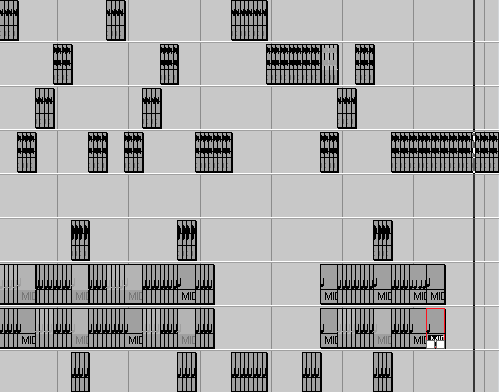
"Unfriendly Satellites" [mp3 removed]. This is partially a remix of another blogger's .mp3--only a couple of snippets of gnarly analog (?) noise yanked out of a much longer but very interesting tune. That's all I'm saying for the moment. The pretty-sounding refrain is a snatch from a Kontakt FX sample called "3 Friendly Satellites," a great title for an evocative bit of sound. The samples were timestretched to fit the sequencer grid and treated with a few Cubase insert effects. The drum-and-bassy rhythms are done in Intakt, a beat-slicing instrument. As long as we're revealing trade secrets (ha), here's the rundown on the previously-posted "1987" [4.7 MB .mp3]: the Vermona drum hits were downloaded off the internets, trimmed in a .wav editor, and further tweaked in Battery. The main chorded theme is done with Reaktor's Titan synth (my favorite so far), and the rising, slightly scary bass chords are done with another softsynth called the Linplug Alpha, a real gem of an instrument. OK, that's it for advertising consumer products. It's all software and I'm still the music-creator, right?
Update: snipped a few bars of "Unfriendly" near the end. There's redundant and then there's redundant. Update 2: took almost 30 seconds out near the end. Same reason. Update 3: added 5 seconds back in for a thrilling (or at least logical) climax and took a screen shot.
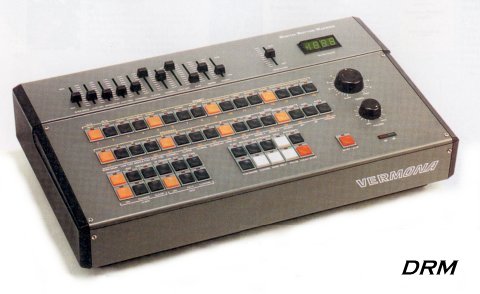
"1987" [4.7 MB .mp3].
The rhythms in this song consist of sampled (then altered and resequenced) beats from the above drum machine, which was originally manufactured in the titular year. (Just as an aside, as mentioned earlier, this blog has adopted 1987 as its foster year. See past references here, although one unrelated one came up because 1987 was in the URL for a link.)
Other songs written and posted in July, but not related to 1987:
"Drum Reverie" [mp3 removed]
"Mouse Party" [mp3 removed]
"Audrey Zapp" (lean version) [mp3 removed]
"Nine Inch Bells" [mp3 removed]
"Cryptkicker" [mp3 removed]
"Greater New York 2005" to Revisit Previous Group of Artists
The Museum of Modern Art's alternative space, PS1 in Queens, announced today that "Greater New York 2005" will consist entirely of artists from the 2000 exhibition "Greater New York." "We wanted to see what all our artists were doing five years later," said PS1 director Alanna Heiss, "and frankly we're sick of this 'fresh young talent' paradigm." She says she fears that New York is "becoming like LA, where the scene is centered around artists still in grad school" and protested the "increasing infantilization trend" of the rival 2004 Whitney Biennial. At an impromptu press conference, she read the following quote from a 1987 Dan Graham essay as further justification for the Museum's somewhat unexpected and daring project:
According to [Walter] Benjamin, "progress," the 19th-century scientific and ultimately capitalist myth, is expressed in commodities, fashion goods which "produce a sense of eternal newness." This makes progress a mythical goal, never to be reached, for there is always the new and it is always superseded by the next new. For Benjamin, then, progress is actually a state of stasis. And yet it is this very stasis that makes the recovery of the just-past potentially subversive.Below, images by "Greater New York" artist Michael Phelan, then and now:

Michael Phelan, from the "Driftwood and Dried Arrangements" series shown in "Greater New York" (2000)

Michael Phelan, from the "Bears" series, to be shown in "Greater New York" (2005)
A lot of nice, very up to date music can be heard on cuechamp's .mp3 blog. I miss his blog-blog, where he always had a knack for finding pop culture new media cross disciplinary post studio post human digital mutant artstuff, but having just the music is good, too. Attuned to the realities of the intellectual property vultures who shape our culture and put us in the poor farm in the name of "protecting the artist," he does the snake eating its tail thing and deletes old mp3s as he adds new ones. So, I just noticed "paul revere 04," by Busta Rhymes and DJ Green Lantern feat. Labba, is about to drop off the list. Go check out this potty mouth drug non-condemning revisitation of the Beastie Boys classic. (Also interesting: Golden Shower's digital electro "New York Groove," Nina Gordon's singer songwriter rendition of "Straight Outta Compton," AC/3p's weird AC DC cover, and assorted other oddities.) Speaking of the Beasties, they were in their heyday around 1987, which this blog (mine, that is) has recently adopted as its foster year--it seems like a good stupid one to keep alive through occasional references, research and in-jokes. Perhaps the most recent date that many of us lived through that suddenly seems really really old. One post has already been done. More will come.
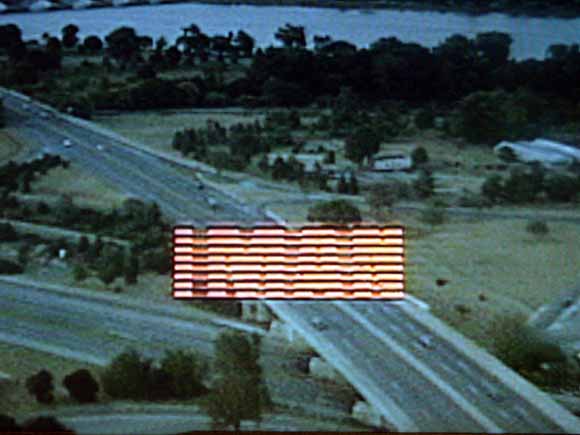
Just noticed Ted Rall's evisceration of Art Spiegelman's 9/11 book. This 20 dollar, 42-page pamphlet, padded out with thick paper stock and reprints of early 20th Century comic strips (ostensibly to show the difference between New York now and then, or whatever) sounded wretched from the reviews I read, which were mostly respectful prior to Rall's blog post. Rall, you may remember, complained loudly in a 1999 Village Voice article that Spiegelman had become a corrupt power broker of the comics world during his tenure at the New Yorker. Spiegelman left the magazine after its post-9/11 turn (further) to the right, which was laudable, even though his wife continues to hold a key position (for artists) there. The book sounded icky for framing the tragedy in terms of Spiegelman's personal meltdown and self-loathing so I didn't go near it, even to free-read it at the bookstore. Rall's take is completely vicious, but for Spiegelman to compare himself, living in a Tribeca loft after 9/11, to a German Jew staying in Berlin after Kristallnacht seems a bit...overwrought.
[The image above is not related--I put it in so the post had a 1987 reference--semi-inside joke.]

Above: John Pomara, oil on paper, ca. 1987. Speaking of painters braving the switch to 1s and 0s, the piece above is what Pomara was doing in '86 and '87 (gorgeously painted semi-abstractions with roots in AbEx, the east village, and '60s sci fi book covers) and below is a detail of a recent piece:
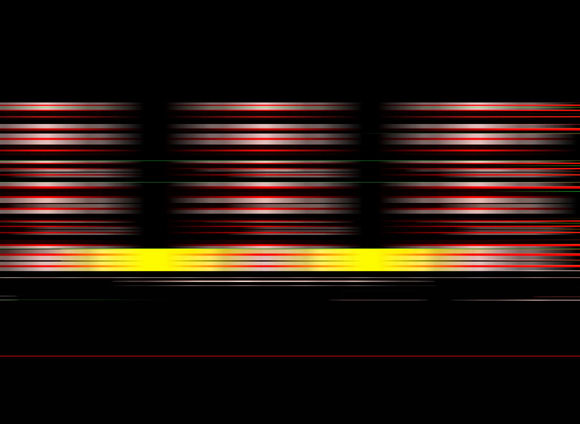
Pomara starts with a pixelated blow up detail of an image such as a face and gets busy crunching in an imaging program, refining and deforming and refining until something that looks like modernist architecture emerges. He does still paint, and these images are used as stencils in that process and also printed out as stand-alone photo-works. I maintain that a painterly eye transcends media and we're too fixated on the physical stuff: obviously output is important, and that's something we're all wrestling with. I'm confident that solutions will continue to be found that will save us from the dreaded fate of becoming printmakers. Calling the output "photography" is one conceptual end-run around the problem.
Virtual Craft Project
Make a needlepoint of the paperback cover image for William Gibson's collection Burning Chrome. See explanatory notes under pics below.
The above "video cyborg" by Richard Berry is très 1987 (but kind of good)--check out those Max Headroom stripes in the background. This is just a scan of a paperback cover, but my idea would be to contract out the sewing so that a detail would look like the image below (assuming anyone has about a year):
Nintendo Ocean, 1994, by Bill Davenport. This Houston-based artist had a ten year jump on a lot of the lowtech Komputer Kraft stuff that's going on now, with the Providence collectives and whatnot. He did go to RISD, but in the '80s. This 8.5" X 12" needlepoint was stitched by Olga Vanucci. Note: the image is cropped at the top and more cyan than the original. More needlepoints from this series are here (click on thumbnails for enlarged views), and a 2002 exhibition of Davenport's faux-lumpen sculptures and crafts, which I prefer to his recent trompe l'oeil book cover paintings, is documented here.
Here's a first stab at mixing some analog music (from vinyl) for a downloadable mp3: the Tuxedomoon Mini-Mix [.mp3 removed]. It's approximately 18 minutes, a 17 MB file. This favors broadband users, and I'm sorry, I've really been trying to keep this page surfer-friendly. Just consider the mix a bonus to the online music-crit below (yeah, I know, right).
Tuxedomoon was a kind of art-punk-cabaret band that emerged from late '70s San Francisco, specifically the scene around the Mabuhay Gardens and the Deaf Club: a time and place band member Blaine Reininger described as "our own Belle Epoque." Principal instruments were bass (that's a pun, sort of--the bassist is Peter Principle), sax, violin, keyboards, and rhythm box. Adjectives used to describe the band would be "innovative," "psychedelic" and "angsty." Three vocalists alternated on the singing chores and all sounded tortured, or suffering from post-breakdown ennui; all members were accomplished musicians downplaying their talent at the height of garage band streamlining. The band flowered during the postpunk era with a recording contract on the Residents' Ralph label, then relocated to Belgium before eventually drifting apart in the mid-'80s. In this selection I've somewhat slighted sax-and-keyboarder Steven Brown's contributions in favor of violinist Reininger's, but I love both. Here's the track listing; all songs are by the band unless noted:
"Volo Vivace" from Half-Mute (1980). Jazzy chamber music anchored in organ-and-synthesizer gloom. Principle's ultracool bass, playing counterpoint to a sequencer, supplies the rhythm."Incubus (Blue Suit)" from Desire (1981). Trippy scifi lyrics sung by Reininger, and you gotta love that beatbox.
"Crash" (flip side of Ralph 45 rpm "What Use") (1980). With its flailing drums, repetitive piano refrain, and filtered acid guitar, this is like proto-breakbeat techno. Never made it onto an album, but this is one of my favorite TM tracks. Guest guitarist Michael Belfer resurfaces on Reininger's solo LP described below.
"Birthday Song," from the Reininger solo outing Night Air (1983). Very '80s noir. Steven Brown's charmingly almost-inept sax makes an appearance here.
"Next to Nothing," 1977 rehearsal recording (from the Pinheads on the Move compilation, 1987). Singer and performance artist Winston Tong popped in and out of the TM lineup: his emotional vocals are featured here. The raw use of the analog synth here is inspiring, from the lurching, stop-and-start notes underneath the vocals to the ending where the sound hisses away in ever-rising pink noise increments. Gives me chills.
Last night I went to hear Discoteca Flaming Star at the BQE Lounge in Brooklyn. It's a duo from Berlin that plays with musicians assembled on the spot in whatever area the pair happens to be touring. Practice sessions can be as brief as an afternoon, so we're talking some real Portsmouth Sinfonia potential here. I was invited by artist Tom Früchtl, visiting from Munich, who has also played guitar in German punk bands over the years. Früchtl was part of the backup ensemble, which included another guitar player and a drummer playing a laptop keypad. The music was nothing as chaotic as I expected--a lot of it was quite soulful and melodic. Very strange mix of krautrock, electro, AC/AC, Abba, and karaoke, with anti-charismatic singer Wolfgang Mayer dressed like a goth chick in arm stockings and black crocheted cap (his face has some of the cragginess of Klaus Kinski's, even with 2-inch false eyelashes). His bass-playing partner Cristina Gómez Barrio, a sultry brunette from Spain, also did the gender-confusion thing, with an emphatic song about the size and potency of her balls. Highlights included a duet in Spanish, a rad cover of the Stooges' "We Will Fall," and a plaintive riff on "Sexual Healing."
Before the concert, Früchtl introduced me to Nathan Abbott, who makes electro tracks under the name Freezie Freekie. Later I checked out a couple of samples on the Satamile label (a quite interesting New York imprint specializing in electro since the mid-'90s) and liked them a lot, particularly the dreamy filter-swirl of "Slow Decay." In the middle of the concert Abbott suddenly pointed out that Discoteca Flaming Star reminded him of Tuxedomoon (an art punk band from San Francisco that moved to Belgium around 1980)--the electronic percussion, the noize, the art vibe was certainly all there; the main difference being guitars (Tuxedomoon was bass, beatbox, violin, sax, and keyboards). Anyway, interesting comment; it made me listen to the music in a different way, imagining how it might have been to hear TM doing the punk cabaret of their early years (documented on the 1987 record Pinheads on the Move).
The following is some historical info on early paint programs, from Dan Rose's DOS® Abandonware
PC Paint - © 1984 Mouse Systems Corp.
This may be the original DOS "paint" program. It is also one of the earliest mouse-driven graphics apps. CGA was the main video format of this time and color graphics were a premium luxury. Using 4-color CGA, this app can make both color and monochrome graphics. It saves files in PIC format and comes with 15 fonts. This version was released on two 360K floppies.
Total installed size: 453K
Microsoft Paintbrush 2.0 - © 1987 Microsoft Corp.
Before Paintbrush became a standard feature in Windows 3.x a company called ZSoft Corp. owned the program which was called PC Paintbrush. Microsoft later bought Paintbrush from ZSoft and called it, what else? Microsoft Paintbrush. They soon ported the DOS program to their Windows GUI and later changed the name to Paint when it was ported to 32-bit Windows. This version was released on two 360K floppies. Total installed size: 564K
UPDATE: Link was out. Fixed now. And fixed again.
UPDATE 2: And fixed again. The guy keeps changing his URLs. And screenshots.
The end of the year is approaching, and with critics everywhere publishing their Top Ten lists, I decided to do a narrative wrap-up of stuff I obsessed about in 2001. Organized into the broad categories of "film & TV," "art," "books," "politics," and "music," these events (or things) didn't necessarily happen (or come into existence) during the past year--in the true solipsistic weblog spirit, the only common thread is that they "happened" to yours truly.
Politics. You would have thought that after the Gulf War, when Mr. Cheney used his newfound contacts with the Saudi sheiks to obtain lucrative business contracts for Halliburton while ailing veterans got the shaft, that we'd be a lot more skeptical about rolling out the American War Machine abroad. All it took was one day of (admittedly cataclysmic) mayhem to turn us back into a country of howling football fans, endorsing whatever dubious and unnecessary plans our unelected leaders proposed. I've been enormously thankful for three websites since 9/11, which served as a kind of reality check against the Official Media Version of things: the left/progressive CounterPunch and Cursor and the libertarian site Antiwar.com. The brave dissenting voices on those pages reassured me that the entire country hadn't gone nuts.
Books. In an earlier post, I mentioned that I bought Jonathan Lethem's post-apocalyptic novel Amnesia Moon at the World Trade Center bookstore a few days before 9/11. Further upping my personal "disaster synchronicity factor" (I warned you this would be solipsistic), I also read three novels by Greg Bear over the summer that had a weirdly prescient bearing (no pun intended) on 9/11 events. Blood Music features a frightening trip up the North Tower of the World Trade Center by a young Brooklyn girl who is the sole survivor of a nation-engulfing plague (the tower itself eventually dissolves into organic goo). In the The Forge of God and its sequel Anvil of Stars, Bear deals with the ultimate terrorist event: the reduction of Earth by hostile ETs to a ring of pulverized rock orbiting the Sun. Forge describes, among other things, the ineffectual response to looming global catastrophe by a Bible-thumper in the White House who essentially loses his marbles, while Anvil explores the morality of revenge, as the few survivors who managed to escape Earth head across the galaxy in search of the planet-killers. Published in 1987, Forge vividly captures the unreal-but-doom-laden feel of the mid-'80s, when Reagan was ramping up the nuclear fear factor. It's great to have the Republicans back in office, isn't it?
Film and TV. Japanese animation has been a subject of much enjoyment and "independent study" this year. It blows me away that an entire country prefers moving drawings to live action shows for their prime time entertainment. I'd love to live in a nation where a great mystical work like Princess Mononoke isn't just the highest-grossing animated film of all time, but the highest grossing film, and where subversive psychodramas involving cyborgs and folkloric demons are discussed at the water cooler. (Instead, I live in a country that adores Titanic and Survivor. Ookay.) I've watched and rewatched tapes of Neon Genesis Evangelion, which was a hit series in Japan several years ago, and continue to find in it new levels of psychological complexity and political paranoia. I love the series' mood of melancholy, and its use of subtle visual details (rather than explanatory chatter) to move the story along. I've learned a lot about it and other shows from Susan Napier's book Anime from Akira to Princess Mononoke. Napier, a professor of Japanese lit at the U. Of Texas, provides a cultural context that helps explain the themes of mechanization, sex, and apocalyptic feeling that run through so much anime. For my own thoughts on the 2001 rerelease of Akira, please check out this recent post.
Art. 2001 was a banner year for shows involving "the computer"; gradually this device that has touched every aspect of contemporary life is making its way into the last pocket of medieval resistance--the art world. Right now there are several camps operating: (1) Artists who aren't giving up painting, sculpture, photography, and installation art, but feel the need to "respond" in some way to the computer (for an excellent round-up of so-called digitally-inspired shows in 2001, please see this post by my friend Hector Pitts); (2) "Net artists," doing the types of interactive and data-crunching projects (frequently covered by New York Times cyber-critic Matthew Mirapaul) that are conceptually interesting but make little concession to the needs and pleasures of meat space (a few things in this category are good, of course, such as the jodi.org website and Michael Ensdorf's excellent video piece Momentary Distractions); and finally, (3) Fine art-trained artists who question the logic and look of the computer, while at the same time using it to make "decelerated" objects for contemplation in a gallery environment (I include myself in this somewhat paradoxical category, and this weblog will be devoted, off-and-on, to other artists with the same concerns).
Music. I spent most of 2000 dj-ing at a bar in lower Manhattan, and gave myself a crash course in recent electronic dance music. I started out the year playing a lot of hiphop and electro but by the fall I had settled into more pub-friendly deep house and 2-step garage discs. I'm still keeping up in 2001, but my consumption dropped off once I stopped receiving my weekly cut of the bar (after 10 months, I was worn out, so I retired in Nov. of 2000--for now). One of my most interesting "discoveries" was Dusseldorf producer Stefan Schwander, who records as Antonelli Electr. and rhythm_maker. His tracks are minimal but eminently listenable; I'm astonished by his ability to get such warmth and depth out of fairly simple loops. And the production is exquisite--every beat and chime feels wrapped in velvet. Although I like a variety of dance subgenres, I prefer Detroit (Juan Atkins)-style tracks and German "deep minimal techno house" for home listening; this is music that thrives both in the foreground and the background.


